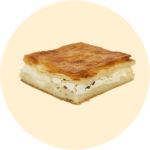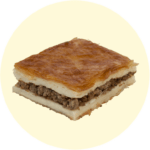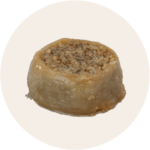Baklava is a rich, sweet pastry made of layers of filo dough filled with chopped nuts and sweetened with syrup or honey. Its history is long and complex, with influences from many different cultures.
The exact origin of baklava is disputed, but it is generally believed to have originated in the Middle East and spread through the Ottoman Empire. Some historical accounts trace the dessert back to the ancient Assyrians in the 8th century B.C., who layered thin bread with nuts and honey and baked it in wood-fired ovens. However, the baklava as we know it today likely developed in the kitchens of the Ottoman sultans.
During the Ottoman Empire, baklava became a highly refined and luxurious dessert, especially in Istanbul. The pastry was reserved for special occasions and celebrations, often served to royalty and nobility. The sultans employed specialized chefs to create baklava in the royal palaces, and it became a symbol of the empire’s wealth and sophistication.
Baklava spread throughout the regions of the Ottoman Empire, including the Balkans, Eastern Mediterranean, and North Africa. Each region developed its own variations, incorporating local ingredients and flavors. In Turkey, pistachios, walnuts, and almonds are common fillings, while in Greece, the pastry is often flavored with cinnamon and cloves.
Today, baklava is enjoyed across the world and is a popular dessert in many countries, including Turkey, Greece, Lebanon, Armenia, and Bulgaria. Its preparation and ingredients may vary from place to place, but the essential combination of crispy filo dough, sweet syrup, and nuts remains the same.














